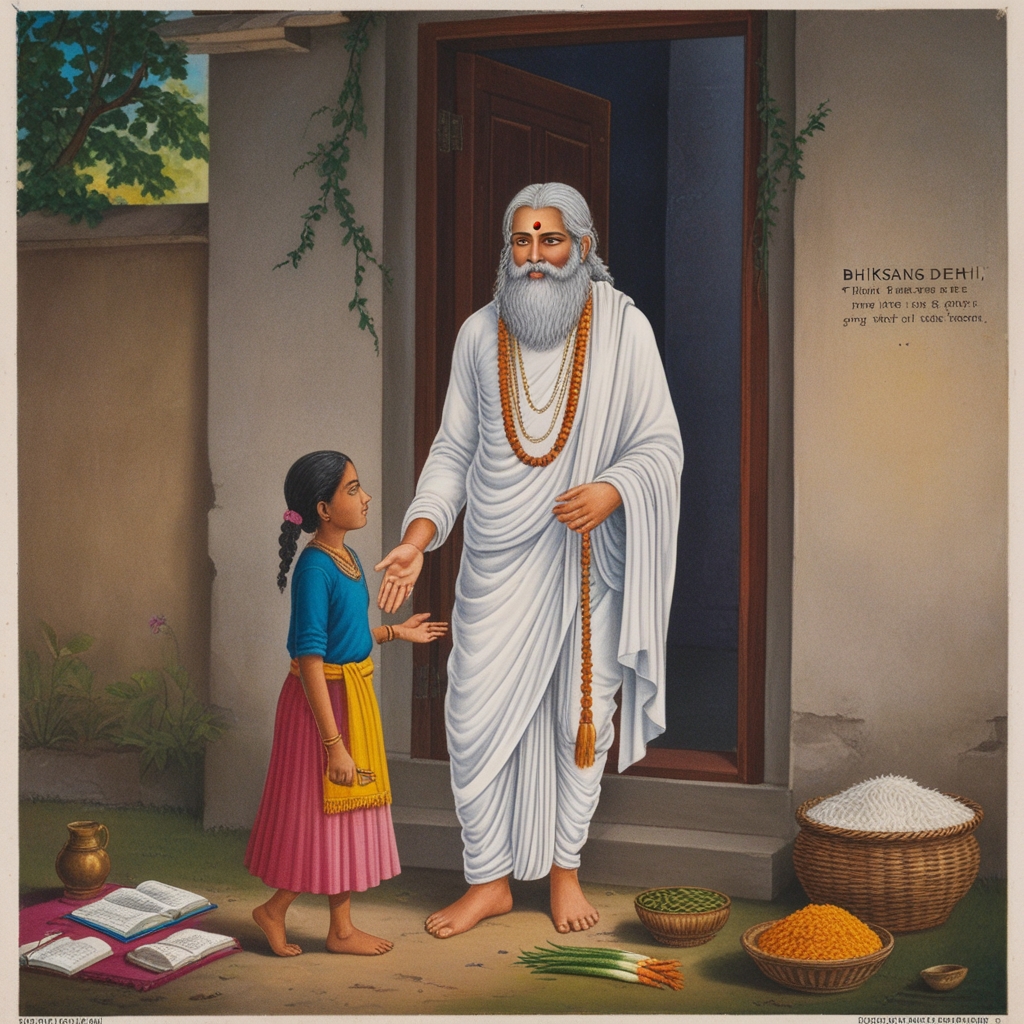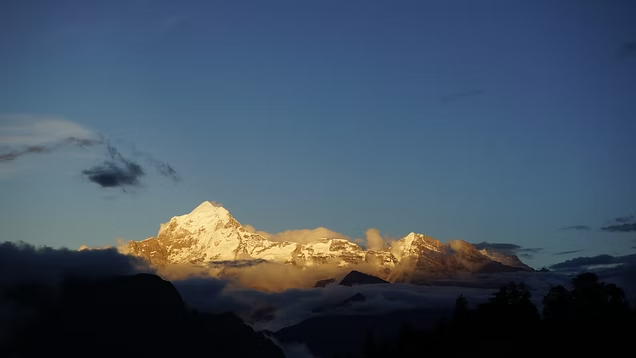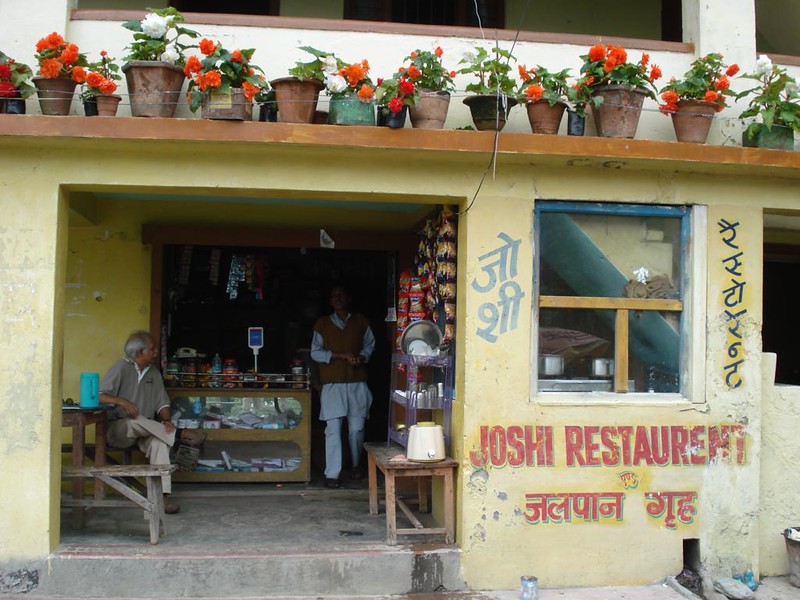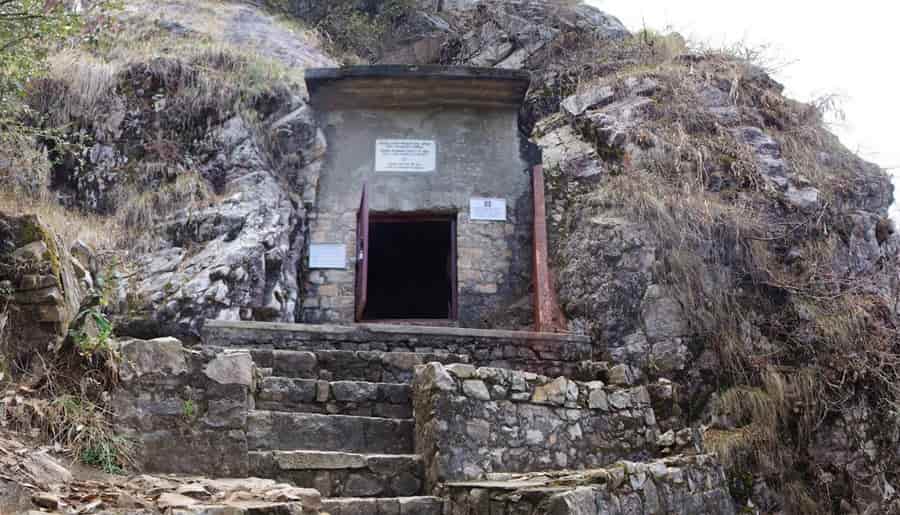THE HIMALAYAS – EPICENTER OF YOGA-I
Introduction:
The epicenter of Yoga lies not only in the Himalayas or ancient temples but also within the purity of a child’s heart. Childhood is often portrayed as a period of innocence and wonder, where the world is perceived through untarnished eyes. During these formative years, children encounter moments that transcend the ordinary, offering glimpses into the Himalayas—the inner stillness where divinity and awareness meet. These experiences can take various forms, ranging from the breathtaking beauty of the Himalaya to the simplicity of human connections.
In this exploration, I will delve into the graceful moments that define the divine experiences of childhood, moments that quietly lead us back to the epicenter of Yoga, the Himalayas, where innocence, quietness, snow-clad peaks, birds chirping, and spiritual awakening coexist. Indeed, the Himalayas continue to stand as a living symbol of purity, peace, and eternal wisdom that reflects the soul’s highest aspirations toward enlightenment.
01. The Himalayas – The Source of Mystical Encounters
A Mysterious Encounter
One fine morning at my village house, I was diligently completing my classwork when a familiar voice suddenly called out my name. It was a voice I had heard earlier in my dream from an unknown, glamorous man of the Himalayas. Intrigued, I rushed to the front door and found a tall, long-bearded man dressed in white cloth, as if the divine man was coming from the Himalayas. However, he was different from the man I had encountered before in my several dreams. In a cryptic utterance, he requested me to summon my father. With my father’s absence, my grandmother emerged to inquire about his visit. Uttering the words “BHIKSANG DEHI,” he received an unexpected offering of rice and raw vegetables.
As I observed from a distance, something about his presence felt deeply spiritual, as though he carried within him the divine power of the Himalayas, radiating calmness and divine energy. He then revealed his purpose of coming from the Himalayas—to see his lovely child. Being astonished, my grandmother questioned his acquaintance, and he claimed to have known me for a long time, even before my birth. This revelation left my family bewildered. His words, his aura, and his Rudraksha offering all seemed to come from the Himalayan divine power, where time, destiny, and spiritual connection intertwine beyond human understanding. He advised that the Rudraksha be placed on my neck with reverence and caution.

2. The Himalayas – A Silent Guardian Beyond Sight
A Cautionary Tale and Forgotten Advice
After the monk’s departure, my father admonished me, warning against opening the door to unknown individuals, especially monks from the Himalayas. He dismissed the monk’s words as unreliable, storing the Rudraksha inside the Almirah. Eventually, the incident faded from our memories.
Months later, a perilous incident unfolded as I walked along the railway track with my friend, engrossed in gossiping about that Monk. Unaware of an approaching train, the people on the road tried to warn us, but their voices went unheard. Suddenly, a high-voltage light flashed, pushing us off the track and saving us from a potential disaster.
It felt as if some unseen power of that pious monk from the Himalayas had intervened to protect us. The divine energy of the Himalayas seemed to surround me in that moment, reminding me of his mystical presence and grace. Despite the harsh reprimands from onlookers, I kept the incident secret from my parents, silently believing that the Himalayas had once again revealed its unseen power through the compassion of that enlightened monk.
3. The Himalayas – A Promise of Return and Divine Connection
Divine Intervention and Acknowledgment
The same monk reappeared, questioning my father about ignoring his advice. To their astonishment, he revealed that I was destined for a train accident, but he had intervened to save me through the divine power of the Himalayas. Acknowledging this miraculous intervention, my father and grandmother expressed their deep gratitude, realizing that his presence was no ordinary event but a blessing from the Himalayas itself.
The monk then instructed the placement of the Rudraksha around my neck, signifying a sacred connection with the Himalayas and its eternal spiritual energy. With a promise to return at the appropriate time at the high altitude of the Himalayas, he departed quietly, leaving me with a profound sense of the Almighty’s gift and a constant awareness of his unseen presence that forever linked my soul to the Himalayas.
4. The Himalayas – A Bridge Between the Seen and the Unseen
A Connection Beyond the Visible
Reflecting on such experiences, it becomes apparent that children often share stories of inexplicable encounters or comforting presences from the Himalayas. These moments provide solace and a connection to something greater, defying logical explanation. In subsequent discussions, I will delve into more divine experiences from childhood—moments that often felt like whispers from The Himalayas, calling me toward a deeper spiritual understanding.
Childhood is a time of innocence, wonder, and discovery. It is a phase where the mind is open to new experiences, and the heart is receptive to the beauty of the Himalayas and the mysteries it holds. For me, my childhood days were not just about games and laughter; they were also deeply intertwined with a spiritual journey inspired by the Himalayas, which laid the foundation for the person I am today. In this reflection, I delve into the memories of my spiritual childhood days, exploring the influences, experiences, and lessons that shaped my soul under the silent guidance of The Himalaya, the eternal abode of peace and divine awakening.
5. The Himalayas – The Spiritual Backbone of Family Faith
Family Traditions and Rituals:
I was born into a very middle-class family in a remote village in India, where no good school or hospital was available, and even the roads were not motorable at that time. But I grew up in a household with strong spiritual values, my childhood was steeped in the rich tapestry of family traditions and rituals that carry the essence of the Himalayas. Each day began with the chanting of prayers, creating a devotional atmosphere that set the tone of the day ahead. These rituals weren’t mere routines but acts of devotion that instilled a sense of connection to something beyond the tangible – something as pure and serene as the Himalayas themselves.
My parents, with their unwavering faith, played a pivotal role in nurturing my spiritual growth. Even my Elder Brother taught me so many things. He was born with a high spiritual legacy, which, according to my parents, he carried from his earlier life connected to the Himalayas. They not only taught me the significance of prayer but also demonstrated the values of compassion, humility, and gratitude. Through their actions, I learned that spirituality wasn’t confined to a sacred space or a specific time but permeated every aspect of life, flowing silently like the divine spirit of the Himalaya.

Nature’s Temples:
One of the most enchanting aspects of my spiritual childhood days was the profound connection to nature. We lived in a very remote village in India where we had acres of cultivable, fertile land, an attached pond for fish cultivation, a couple of cows, goats, and ducks, and a wide courtyard where I usually played with village friends. But the temple was set in a near-distant place from our house, where I learned to live with nature and feel the silent presence of the Himalayas in every breeze and sunrise.
Every morning at 5’clock, my mother cleaned the temple and then she woke us up for prayer. We were the devotees of Lord Krishna. My mother could sing very well, and she often sang Krishna Bhajans that carried a calmness reminiscent of the Himalayas. However, I was totally ignorant about the meaning of the song, but I had to sit there till the completion of Pooja and other rituals. My interest was only in the sweets offered to God (Prasad), yet even in those innocent moments, I felt a faint spiritual connection with the Himalaya through the rhythm of devotion surrounding our home.
After the completion of Pooja, my mother offered Prasad (sweets and other fruits offered to Lord Krishna) to other members of the family. Then the day started with breakfast and other activities. I was very much interested in climbing trees, and my mother usually called me a monkey. I strolled through lush meadows, and gazing at starlit skies became moments of communion with the universe. I learned to find solace in nature, understanding that it was a sacred place where I could feel a higher power’s embrace. This connection with the natural world became a source of inspiration and a reminder of the transcendent beauty that exists beyond the mundane.
6. The Himalayas – The Unheard Stories of Saints and Sages
Stories that Stirred the Soul:
My spiritual learning was not limited to formal teachings or religious doctrines; it extended to the captivating stories that stirred my soul. At bedtime, my mother often sang Bhajans of Lord Krishna and told different stories of saints and sages from Ramayana and Mahabharata, and moral parables filled my nights with a sense of wonder and reverence. Whenever she told the stories, I often asked her to say something about the Himalayas. Since she was not so acquainted with the Himalayas, she could not say more about the stories of the Himalayan Sadhus. The other stories weren’t just fables; they were narratives that illuminated the path of righteousness and virtue.
The tales of selfless acts, perseverance in the face of adversity, and the triumph of goodness over evil left indelible imprints on my impressionable mind. They sowed the seeds of empathy, kindness, and a deep understanding of the human experience. In those stories, I discovered that spirituality was not about rigid rules but a guide for navigating the complexities of life with grace and compassion.
7. The Himalayas – The Mountain of Questions and Eternal Seeking
Questions and Curiosities:
As I navigated my way through the labyrinth of childhood, my spiritual journey was marked by an innate curiosity and a relentless pursuit of answers to life’s profound questions. Why are we here? What is the purpose of suffering? Is there a higher power guiding our destinies? Where are the Himalayas, where that Monk is living, and so on? These queries were not stifled but encouraged, sparking conversations that delved into the depths of spirituality. I tried to get an answer, but to no avail due to my age barrier.
My parents, recognizing the importance of nurturing a questioning mind, encouraged me to explore various spiritual traditions and philosophies. This openness broadened my perspective, allowing me to appreciate the diversity of beliefs while discerning the universal threads that bind humanity’s spiritual tapestry. Often, I thought that can I get all my answers from that Himalayan Monk?
Challenges and Growth:
No spiritual journey is devoid of challenges, and my childhood was no exception. The tumultuous adolescent years brought about a period of questioning and skepticism. As I grappled with the complexities of identity and sought my place in the world, the spiritual foundation laid in childhood provided an anchor amidst the storm. I spent several nights sleepless thinking of that curious Monk who came from the sacred place “The Himalayas”, which is called the Epicenter of Yoga.
Adversity became a catalyst for growth, and the lessons learned during those formative years became invaluable. The values instilled in childhood acted as guiding principles, steering me back to the path of spirituality when life’s turbulence threatened to derail my sense of purpose.
Reflecting on my spiritual childhood days fills my heart with gratitude for the profound influences that shaped my soul. The rituals, connection with nature, inspiring stories, and the freedom to question and explore have collectively contributed to a spiritual foundation that continues to anchor me in the complexities of adulthood.
Childhood, with its innocence and receptivity, serves as a fertile ground for planting the seeds of spirituality. It is a time when the boundaries between the material and the divine are blurred, allowing the soul to blossom with the purest intentions. As I journey forward, I carry the lessons of my spiritual childhood, a beacon that illuminates the path toward a life infused with purpose, compassion, and a deep connection to the sacred.
Embarking on my spiritual journey, I traveled several places throughout India to search for answers to my childhood questions, but those places could not give me the answers to my childhood questions. I found the temples are full of dirt, and the priests are greedy. Some of the temples in North India, South India, and West India are being cleaned every hour. In spite of visiting several places, I could not find out that the Himalayan Monk who promised me to come back at the right time.
Eventually, I grew up, started earning, and got married. I transferred to Delhi, the capital of India. I lost my childhood memories due to my work and family pressure. After a certain period, I was exhausted from work pressure. During this period, I was often dreaming of my visit to various places in the Himalaya but could not understand the secrets of such of dream.
8. MY FIRST VISIT TO THE HIMALAYAS, THE EPICENTER OF YOGA:
My relentless searches disturbed my mind. Often, I prayed to the Almighty for my meeting with that pious Monk of the Himalayas. By this time, my Elder Brother arranged my initiation from a renowned Kriya Yogi. During my initiation, when my revered Guruji kept his lotus feet at Moola Dhara Chakra and hands at Shahasra Chakra, I felt unconscious and didn’t know how long I was in that state. When I got my consciousness, my Guruji taught me another Kriya (Yoni Mudra). I was amazed to see the dancing lights surrounding one Black Spot. Later on, he explained in detail about my unconsciousness during initiation, and to see the dancing colorful lights. Other realizations can’t be explained here. He cautioned, “Not to stop practicing”.

After a few months, I got my transfer order in Delhi, the capital of India. I was amazed to see my transfer order. On the one hand, I felt sad to leave the present place and to depart from my Guruji; on the other hand, I was happy to think of fulfilling my long-cherished desire to meet with that attractive Monk of the Himalayas. However, I came to Delhi as per the order and shifted my family thereafter.
With the mounting work pressure and continuous hammering of my desire to find out that the Monk in the Himalayas, I felt sick and bored. Almost every alternate night, I dreamt of that Himalayan Monk. Day by day, this was becoming unbearable to me. I discussed this with my Guruji. He advised me to visit Babaji’s Cave, where our revered Shayamacharan Lahiri was initiated in Uttarakhand. Accordingly, I fixed up my mind to visit Dwarahat at the foothill of the Himalayas.
My wife and my daughter accompanied me. PWD Guest House at Dwarahat had been booked, and a Train ticket up to Ramnagar was arranged. Ultimately, the journey date approached, and we started our journey keeping my long-cherished desire in mind.
Embarking on “my spiritual journey from Delhi to Dwarhat” in the Himalayas was an experience that transformed me in ways I never anticipated. Nestled in the heart of Uttarakhand, India, Dwarhat, a picturesque foothill of the Himalayas, offers a serene environment, making it the perfect destination for anyone looking to delve into spirituality and self-discovery.
The journey began amidst the bustling streets of Delhi, a city teeming with life, history, and a palpable energy that both excites and overwhelms. As I set out from Delhi, the anticipation of what lay ahead on “my spiritual journey from Delhi to Dwarhat” and to find out my long-cherished Monk of the Himalayas filled me with an inexplicable sense of peace and purpose.
The transition from the urban landscape of Delhi to the verdant, soothing vistas of Uttarakhand marked a significant shift not only in the scenery but in the very essence of “my spiritual journey to Dwarahat at the foothill of the Himalayas.” The further I traveled, the more I felt the cacophony of city life being replaced by an inner silence, a quietude that I had long sought but seldom found. The majestic Himalayas, with their towering peaks, seemed to echo the quest for spiritual awakening that had prompted “my spiritual journey from Delhi to Dwarhat.” Each mile traversed brought me closer to nature and, by extension, closer to myself.
Upon reaching Dwarhat, a nice, quiet, and peaceful place in the Himalaya, “my spiritual journey from Delhi to Dwarhat” took on a deeper, more profound significance. My actual purpose of the journey was to visit Kukuchina, where I had to reach Babaji’s Cave — a sacred site nestled deep in the Himalayas — which I had heard about from my Elder Brother.
Dwarahat, with its ancient temples and spiritual heritage, felt like stepping back in time to an era where spirituality was the essence of existence. The air carried an ethereal quality, laden with the scent of pine and the chants of hymns that resonated with the soul. It was here, amidst the natural splendor of the Himalayas and the echoes of devotion, that “my spiritual journey from Delhi to Dwarhat” transitioned from a physical voyage to an exploration of the soul.

I reached there in the evening and stayed at a PWD Guest House in Pujakhet Road, Kalikholi, Dwarahat, which I had booked from Delhi. The Guest House stood as a serene abode in the Himalayas, surrounded by sky-kissing pine trees and lush vegetation. In front, the Guest House was bordered by attractive flowering plants and herbaceous shrubs. From the main entrance, pebbles were scattered on one side, and at the back portion, there was a gorge of deep bushes overlooking the Himalayas. There was a large lawn with lush green grass.
The rooms we were allotted were spacious and comfortable. Since there was an erratic power supply, the Caretaker of the Guest House provided candles and lanterns. Both my family and our driver, Mann Singh, were hungry, so we were served an early dinner. Before going to bed, the Caretaker (Khusal) cautioned us “not to open the door,” as jungle foxes and cheetahs were frequently seen from the Himalaya region. Mann Singh was given a small room adjacent to ours for his stay. The Caretaker also provided us with a whistle to blow in case of danger. We went to bed early so I could rise at dawn to begin our onward journey to Babaji’s Cave. However, we spent the night very cautiously without any danger.

Earlier, I heard the name of a person who left his lucrative job at the State Bank’s Burrabazar Branch of Kolkata and started living at Kukuchina, a sacred region of the Himalayas, to serve the pilgrims upon instruction from Babaji. At about 10:30 a.m., we reached there and found a small tea stall and a tiny grocery shop in a cottage, which I later came to know was the last lap of the road, and there was no place to stay.

After taking tea and snacks, I met that great unknown man sitting in his lotus pose, who called me by my name. I was astonished to hear my name from him. Later, I asked how he came to know about my journey and my name. He told me, “I have been following you from Delhi to Kukuchina, sitting in my small room amidst the Himalayas, for your safe journey.” Then I realized that he knew everything about me, just as I had heard from my Elder Brother.
The Great and Enlightened Man was Late Netraballav Joshi, the disciple of Late Mriganka Sekhar Bhattacharya of Silchar, Assam — a great Yogi who was initiated by Shyamacharan Lahiri. Mriganka Sekhar spent nearly 15 years at Kukuchina in the Himalaya and tried to construct a walkable road from Kukuchina to Babaji’s Cave. Upon mounting pressure from the villagers, he had to retreat. During his entire stay at Kukuchina, Joshiji looked after him with deep devotion. These facts are rarely known to the people who are visiting Babaji’s cave.
By this time, Joshiji had arranged our lunch and requested we stay back at his small cottage. We were provided a room for my wife and my daughter, and our driver, Mann Singh, was accommodated at their Grocery Shop. The night we spent at his small cottage is still remarkable to me. At midnight, I heard someone blowing his flute. I woke up and tried to find the source of the flute. I observed that the sound was coming from Joshiji’s room. I peeped at the door and found that he was engaged in deep meditation and performing Pranayama.
In the morning, I asked him, “How does this flute sound is coming”. He just smiled and replied that when any Yogi is performing higher Khechari Mudra, the breathing is performed through the vertebrae, not through the nostrils. However, he started our arrangement for starting our journey to Babaji’s Cave. We started at about 7.30 a.m. He arranged a porter and guide for our safe journey to Babaji’s cave. He also said, “Babaji is still watching whether any of his followers is in danger. He rushes to the spot in any form and rescues them”.
At that time, there was no proper road to climb up the steep Himalaya Hill. After getting down about half a kilometer from his house, our climbing started. Only there was a Pagdandi (a narrow natural trail) of high and lows covered with stones and small pebbles. If it slips, the traveler will definitely fall into a deep gorge. However, very cautiously, we were climbing the hill following the Pagdandi.
After climbing about 2.5 kilometers in the Himalayas, my wife suddenly felt suffocated and became unconscious. There was no one to help except the guide. I was crying like a child, calling for help from Babaji in this remote altitude of the Pandukhuli range of the Himalaya. After a few minutes, I noticed a Sadhu (Monk) emerging from the misty slopes of Babaji’s Cave in the Himalayas.
He asked what had happened. I told him about the incident. He sprinkled some cold water on her face and placed his hands on her head until she regained consciousness. Within a few minutes, she opened her eyes. By that time, the guide had also arranged some water. The Sadhu of the Himalayas offered some sweets to my wife, asking her to eat. I hesitated, but he assured me that the sweet had already been offered to Babaji and could be taken without hesitation.

He then asked the purpose of my visit. I told him everything truthfully — that I was frantically trying to find the Monk of the Himalaya I had seen in my childhood days. He listened calmly and said, “You will definitely come into his contact at the appropriate time, but you have to continue searches both physically and internally.
After taking his blessings, we resumed our journey through the Himalayas toward Babaji’s Cave. After nearly an hour and a half, we reached the sacred spot. I performed my rituals there, and after spending some quiet moments in devotion, we began our return journey. I safely descended from Babaji’s Cave in the Himalayas, where Shyamacharan Lahiri was incarnated by Babaji. Upon returning to Joshiji’s residence, I found him anxiously waiting for us.
Before I could explain anything, he began recounting the incident as though he had witnessed it himself. We were astonished to hear him say that Babaji had come for our rescue. There have been many such miraculous incidents in the Pandukhuli range in the Himalayas, where Babaji appeared and saved his devotees in times of distress
After spending the night at his cottage, we started for Dwarahat Guest House and came back at 11.30 am. After spending that night, we started our return journey to Delhi. The journey to Dwarahat is still a mesmerizing one. I determined to find out my long-cherished Himalayan Monk as per the advice of that Monk.
9. Conclusion:
Reflecting on “my spiritual journey from Delhi to Dwarhat” in the Himalayas, I am filled with gratitude for the myriad lessons learned and the countless experiences that have shaped my path. This sacred journey through the Himalayas has taught me the importance of introspection, the beauty of nature, and the transformative power of spirituality. It has shown me that true spiritual awakening lies not in the external but within the depths of one’s own soul.
“My spiritual journey from Delhi to Dwarhat” in the Himalayas had been a profound experience, one that has left an indelible mark on my life. It has been a journey of self-discovery, of finding peace amidst chaos, and of understanding the true essence of spirituality. The calmness and divine vibration of the Himalayas continue to echo within me, reminding me of the eternal connection between man and the divine. As I look back, I realize that this journey through the Himalayas was just the beginning of a lifelong quest for spiritual growth and enlightenment — a journey that will continue to inspire and guide me in the years to come.
The true essence of this journey through the Himalayas is not merely about reaching a sacred destination like Babaji’s Cave — it’s about discovering the divine within ourselves. Each step taken in the serene valleys and steep trails of the Himalayas mirrors the inner climb toward self-realization, patience, and faith. The mountains remind us that spirituality isn’t found in rituals alone but in silence, surrender, and service.
Through this pilgrimage, we learn that the greatest Guru often resides within, quietly guiding us when we listen with a pure heart. The Himalaya stands as a timeless teacher, showing us how stillness can be more powerful than speech and how every challenge on the path is an invitation to grow closer to the Divine.
FAQ:
- Where is Babaji’s Cave Located?
Ans: Babaji’s Cave is located near Kukuchina village, about 5–6 kilometers from Dwarahat in the Almora district of Uttarakhand, India. Nestled deep in the Himalaya, this sacred cave sits at an altitude of around 6,400 feet and is surrounded by dense pine forests, offering a tranquil and meditative environment.
- Why is Babaji’s Cave considered sacred?
Ans: The cave is revered as the place where Mahavatar Babaji, the immortal Himalayan Yogi, initiated Shyamacharan Lahiri into the sacred science of Kriya Yoga in the 19th century. This initiation marked the revival of Kriya Yoga for householders and seekers worldwide, making Babaji’s Cave one of the holiest pilgrimage sites in the Himalaya.
- How can one reach Babaji’s Cave from Dwarahat or Kukuchina?
Ans: From Dwarahat, travelers can drive or hire a local jeep to Kukuchina village—the last motorable point. From there, the cave is a nearly 4.5-kilometer uphill trek through the scenic forests of the Himalaya. The trail is steep but beautifully serene, with panoramic mountain views that make the journey spiritually uplifting.
- Who is Mahavatar Babaji?
Ans: Mahavatar Babaji is a deathless master described in Autobiography of a Yogi by Paramhansa Yogananda. He is believed to reside in the Himalaya, guiding advanced yogis and silently blessing humanity. His mission is to uplift spiritual consciousness through Kriya Yoga, helping seekers realize their divine potential. Some of the highly enlightened Yogis say that he can be seen at Gyanganj also.
- What is the significance of Shyamacharan Lihiri’s initiation at Babaji’s Cave?
Ans: Lahiri Mahasaya’s initiation by Babaji at this cave symbolized the return of ancient yoga wisdom to the modern world. It bridged the gap between ascetic life and household spirituality. From this very spot in the Himalaya, the sacred teachings of Kriya Yoga began to spread globally, inspiring millions to meditate and seek higher truth.
- Are there any accommodations near Babaji’s Cave?
Ans: Yes, accommodation options are available in Dwarahat town, including the PWD Guest House, local lodges, and small homestays. Some spiritual travelers also stay at YSS (Yogoda Satsanga Society) Ashram Dwarahat, which provides clean lodging and a meditative atmosphere ideal for those visiting the Himalaya for spiritual purposes. Travelers can also ask for accommodation at the Tea Stall of Netraballav Joshi at Kukuchina.
- What kind of experience can visitors expect at Babaji’s Cave?
Ans: Visitors often describe a profound sense of peace, stillness, and divine energy inside the cave. Many experience deep meditation, spontaneous calmness, or emotional release. Surrounded by the silence of the Himalaya, Babaji’s Cave serves as a spiritual vortex—a place where seekers feel a powerful connection to higher consciousness. But I am sure, the travelers can face his presence if anyone falls into any danger.
- What spiritual message does Babaji’s Cave convey to pilgrims?
Ans: Babaji’s Cave reminds every pilgrim that true divinity lies within. The journey to this sacred site in the Himalaya symbolizes the inner climb toward self-realization. The stillness of the cave mirrors the stillness of the soul—a place where silence speaks, and seekers awaken to the eternal presence of Babaji’s blessings.






